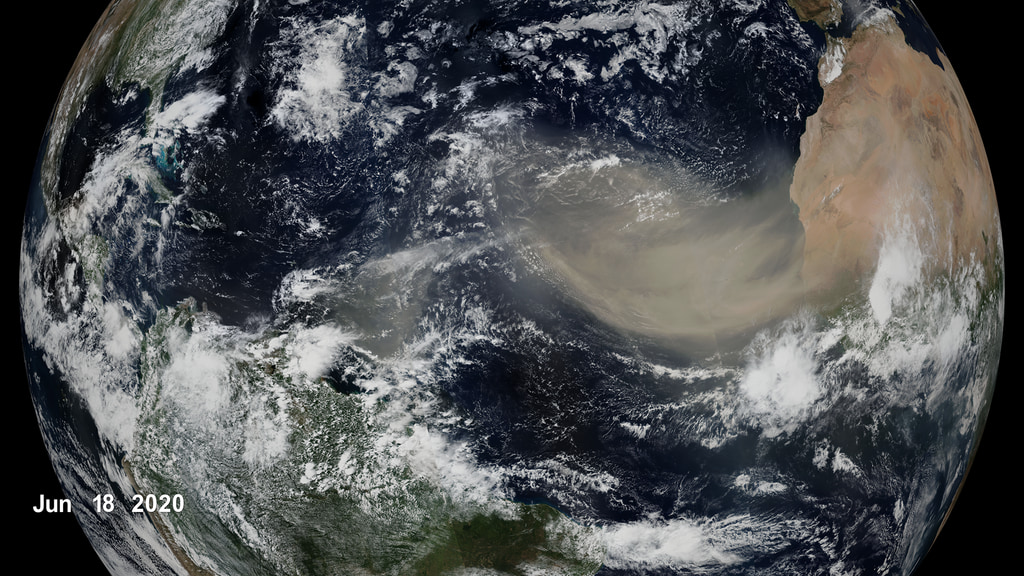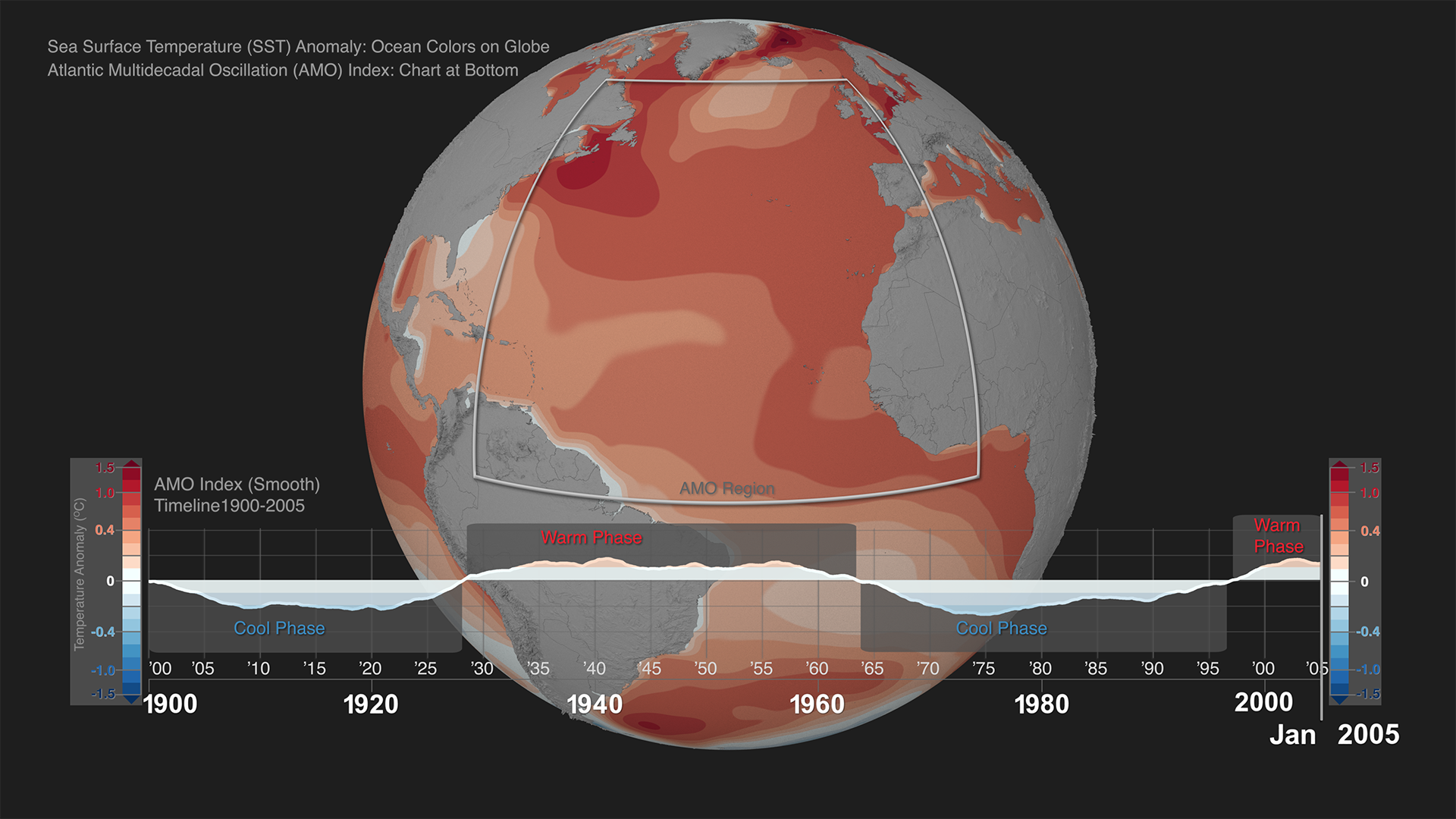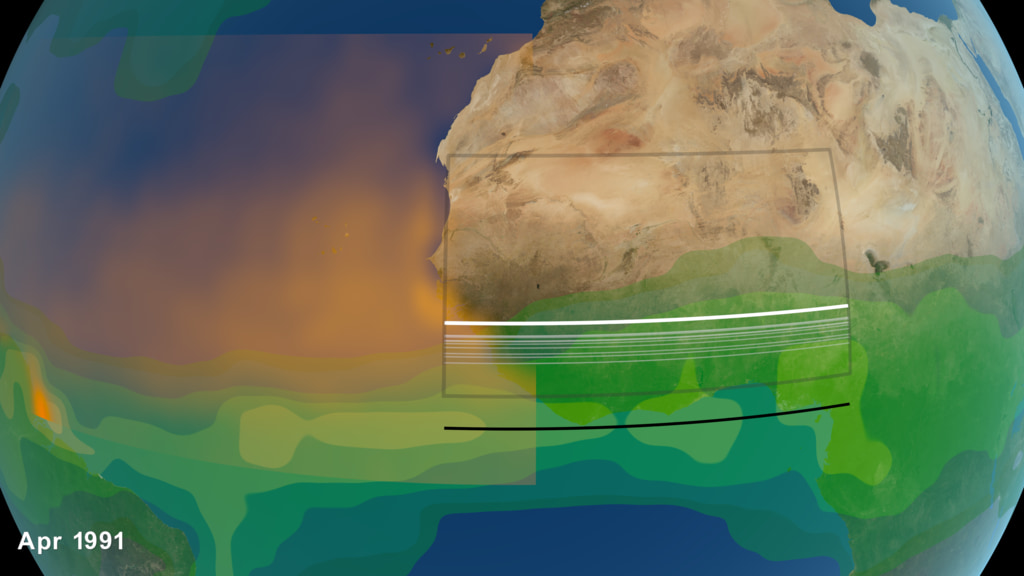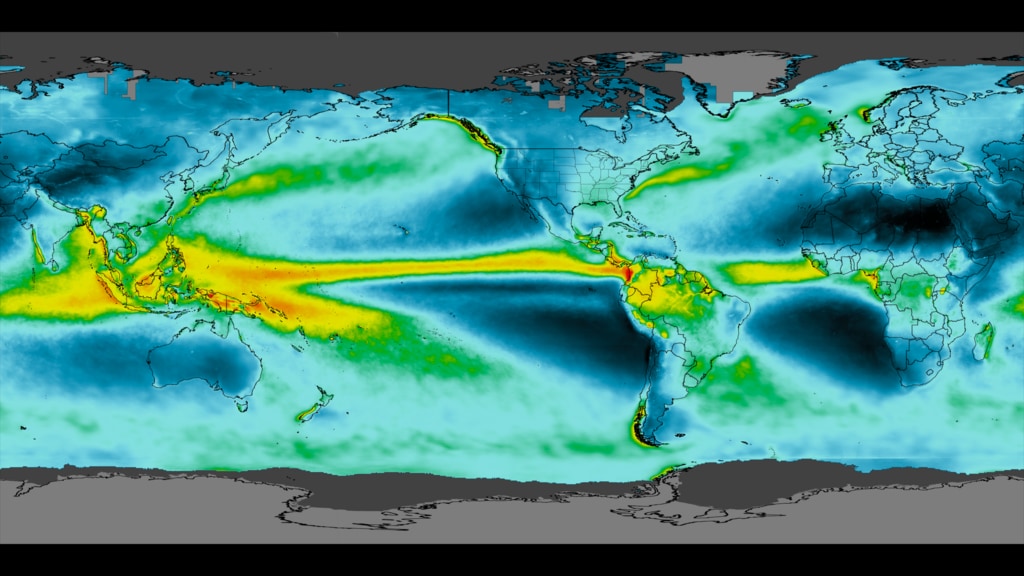Warmer Ocean Temperatures May Decrease Saharan Dust Crossing the Atlantic
Every year millions of tons of dust from the Sahara Desert are swirled up into the atmosphere by easterly trade winds, and carried across the Atlantic. The plumes can make their way from the African continent as far as the Amazon rainforest, where they fertilize plant life.
As the climate changes, dust activity will continue to be affected. In a new study, NASA researchers predict that within the next century we will see dust transport approach a 20,000-year minimum.
Credits
Please give credit for this item to:
NASA's Goddard Space Flight Center
-
Producers
- Kathryn Mersmann (USRA)
- Lara Streiff (GSFC Interns)
-
Writer
- Lara Streiff (GSFC Interns)
-
Narrator
- Lara Streiff (GSFC Interns)
-
Visualizers
-
Helen-Nicole Kostis
(USRA)
-
Kel Elkins
(USRA)
-
Helen-Nicole Kostis
(USRA)
Series
This page can be found in the following series:Release date
This page was originally published on Monday, April 19, 2021.
This page was last updated on Wednesday, May 3, 2023 at 1:44 PM EDT.




